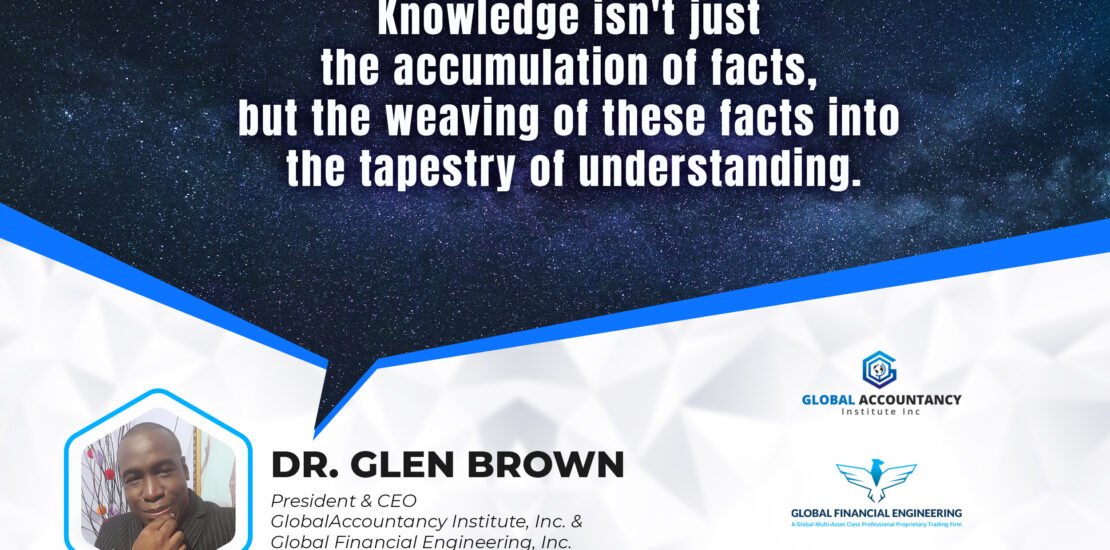Unlocking the Secrets of Proprietary Trading: A Pathway to Financial Independence
- April 8, 2024
- Posted by: Drglenbrown1
- Category: Financial Education, Proprietary Trading Courses

Proprietary trading, often referred to as “prop trading,” is where financial firms or banks trade stocks, bonds, currencies, commodities, their derivatives, or other financial instruments, with their own money as opposed to customers’ money, to make a profit for themselves. This form of trading has not only catalyzed the careers of many successful traders but has also paved their paths to financial independence. The Global Professional Proprietary Trading Course (GPPTC) offers an immersive educational experience designed to equip future traders with the skills necessary to excel in this dynamic field.
Introduction to Proprietary Trading and Its Benefits
Proprietary trading involves taking substantial risks, but the rewards can be equally significant. By trading a firm’s capital, prop traders are not limited by client preferences or restrictions, giving them the freedom to execute high-volume, high-frequency trades. This freedom allows traders to exploit market inefficiencies, hedge internal exposures, or profit from spread trades.
The major benefit of prop trading is the potential for significant financial gain. Prop traders share in the profits they generate, which can be substantial, particularly in volatile markets. Furthermore, they gain access to sophisticated trading technology and databases, which can provide an edge over retail traders and investors.
How GPPTC Prepares Students for a Successful Career in Trading
The Global Professional Proprietary Trading Course is meticulously structured to provide comprehensive training in the art and science of trading. The course covers everything from the basics of financial markets to advanced trading strategies and risk management techniques. Here’s how GPPTC prepares its students:
- Comprehensive Curriculum: The course curriculum includes modules on market analysis, trading psychology, risk management, and the regulatory environments. This broad coverage ensures that students not only learn trading strategies but also understand the global economic landscape within which they will operate.
- Practical Experience: GPPTC integrates real-world trading simulations that mirror current market conditions. These simulations allow students to apply their knowledge, hone their trading skills, and learn to manage psychological pressures in a controlled, risk-free environment.
- Expert Instruction: The faculty comprises experienced traders and financial experts who bring years of practical experience to the classroom. Their firsthand industry knowledge helps illuminate the nuances of proprietary trading, providing students with an insider’s view of what to expect in the real world.
Success Case Studies from Former Students
The true testament to the effectiveness of the GPPTC comes from the success of its alumni. Here are a few case studies that illustrate the potential paths GPPTC graduates can take:
- Case Study 1: The Algorithmic Trader: John Doe started the GPPTC with a background in computer science. Through the course, he specialized in algorithmic trading. Using the strategies learned, John developed trading algorithms that capitalized on market inefficiencies. Two years post-graduation, he manages a proprietary algorithm for a major financial firm, significantly boosting its operational efficiency and profitability.
- Case Study 2: The Risk Management Guru: Jane Smith was always fascinated by risk assessment. At GPPTC, she deepened her understanding of risk management strategies specific to trading. She now heads the risk management department at a boutique trading firm, where she implements advanced risk mitigation techniques she learned from the course.
- Case Study 3: The Independent Day Trader: Ahmed Khan used the skills he acquired at GPPTC to start his own day trading business. Focusing on equities and options, Ahmed applies short-term trading strategies to generate steady profits. His understanding of market dynamics and risk control, gained through GPPTC, helps him minimize losses and capitalize on winning trades effectively.
Conclusion
The Global Professional Proprietary Trading Course doesn’t just teach trading; it prepares financial warriors to thrive in the fast-paced world of proprietary trading. For those aspiring to gain financial independence through trading, GPPTC offers the tools, knowledge, and support necessary to succeed. As our case studies show, whether you aim to innovate with technology, lead in risk management, or strike out on your own, the GPPTC is your gateway to achieving these goals.
About the Author: Dr. Glen Brown
Dr. Glen Brown is a distinguished figure in the financial and educational sectors, known for his visionary leadership and profound expertise in investments and finance. As the President and CEO of Global Accountancy Institute, Inc., and Global Financial Engineering, Inc., Dr. Brown has dedicated his career to integrating the fields of accountancy, finance, investments, trading, and technology. With a Ph.D. in Investments and Finance, he has a deep understanding of the financial markets and has developed numerous innovative trading strategies and educational programs that have transformed how trading education is delivered.
Dr. Brown is not only a seasoned financial engineer and data scientist but also an inspiring educator who believes deeply in the transformative power of learning. His teachings encourage students to embrace both intellectual growth and practical skills, preparing them for success in the competitive world of proprietary trading.
Call to Action (CTA)
Ready to elevate your trading skills to professional levels and unlock the door to financial independence? Register now for the Global Professional Proprietary Trading Course (GPPTC) and take the first step towards becoming a master of the financial markets. Enroll today at Global Professional Proprietary Trading Course and begin your journey to success.
General Disclaimer
The information provided in this article and the training courses are for educational and informational purposes only. They are not intended as financial advice. The views, thoughts, and opinions expressed belong solely to the author, and not necessarily to the author’s employer, organization, committee, or other group or individual. Traders should consider their financial position, objectives, and risk appetite before trading in the financial markets.
